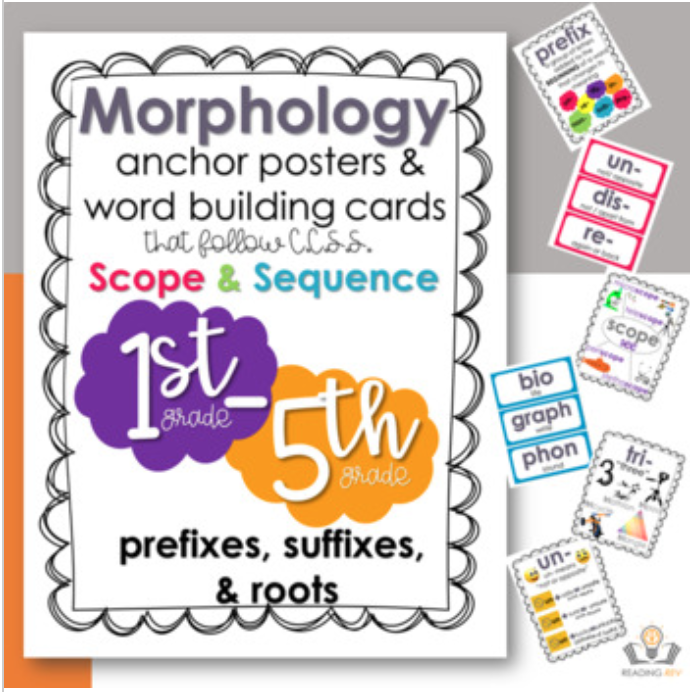Think of a morpheme as the tiniest possible thing you can make from language and still make sense.
You can say “go” and it makes sense. You can’t make it any smaller, though. You can’t say ‘g’ or ‘o’ and make sense.
If you can’t make the word or parts of the word any smaller and have it still make sense, then you have broken down the word to its morpheme.
If you want to get more technical, then a morpheme is a form (a sequence of sounds) with a recognizable meaning.

Go: 1 Morpheme Word
For example, the word “go” has one morpheme. You can’t make the word any smaller or break it up and have any of its parts make sense or convey meaning. The word “greatest” has two morphemes: “great” and “-est”. This is because the “-est” has a meaning. It imbues the word with the superlative.
Freebase versus Bound Morphemes
There are two types of morphemes- freebase and bound.
What are free morphemes?
“Free morphemes” can stand alone with a specific meaning, for example, eat, date, weak.
Example of a free base morpheme:
a free base morpheme is “woman” in the word womanly.
“Bound morphemes” cannot stand alone with meaning. Morphemes are comprised of two separate classes called (a) bases (or roots) and (b) affixes.
Example of a bound base morpheme:
a “bound base” morpheme is -sent in the word dissent.

Bound Morphemes: Affixes
An “affix” is a bound morpheme that occurs before or after a base. An affix that comes before a base is called a “prefix.” Some examples of prefixes are ante-, pre-, un-, and dis-, as in the following words:
antedate
prehistoric
unhealthy
disregard
An affix that comes after a base is called a “suffix.” Some examples of suffixes are -ly, -er, -ism, and -ness, as in the following words:
happily
gardener
capitalism
kindness
Derivational Affixes
There are two types of affixes: derivational or inflectional.
A “Derivational affix” changes the meaning of a word by building on a base.
For example, the prefix un- to clear changes the meaning of clear so that it means “not clear.”
Is that clear? 😛
Another example would be adding the suffix -er to work . If we add -er to work, then we change the meaning of work to the person who works.
Remember:
all prefixes in English are derivational. That is because a prefix always builds on the base.
However, suffixes (which are morphemes that come at the end of the word) may be either derivational or inflectional. An inflectional affix does not change the meaning of the word completely; it changes its grammatical information.
These kinds of morphemes can express
- Aspect
- Case
- Modality
- Number
- Person
- Tense
- Voice
For example, if we add the morpheme -s to “garden”, this does not change the meaning of the word “garden” completely. It just tells us that there is more than one garden. It changes the number of gardens. Its like a slight alteration.
Derivational affixes is if your tailor makes a small cut into your skirt to transform it into a pair of shorts. Inflectional affixes is if your tailor makes a small cut and hems your skirt a bit so it’s a mini, not a maxi.
Bottom Line:
To grossly simplify so you can remember this easily: Derivational changes a word’s meaning. Inflectional gives adds some grammar info.
Inflectional Affixes
There are only eight “inflectional affixes” in English, and these are all suffixes. English has the following inflectional suffixes, which serve a variety of grammatical functions when added to specific types of words. These grammatical functions are shown to the right of each suffix.
-s noun plural
-‘s noun possessive
-s verb present tense third person singular
-ing verb present participle/gerund
-ed verb simple past tense
-en verb past perfect participle
-er adjective comparative
-est adjective superlative
How to Teach Morphemes in the Classroom

Word banks and fill-in-the-blank worksheets are great methods to teach suffixes and affixes.
Morphemes worksheets
Morphology! 1st-5th Grade Prefix, Base, Suffix Anchor Charts and Morpheme Cards

Teach Morphemes: Resources
- Teachers Pay Teachers, a marketplace for teacher-mdae , original educational resources is a great place to browse for lesson plans.
- Classroom in the Middle has excellent examples of some easy worksheets with word banks to teach affixes.
- VocabularySpellingCity allows teachers to create customized word lists based on specific morphemes or prefixes and suffixes, and provides tools for tracking student progress and performance.
To learn more about Supporting English Acquisition through a Morphographic Approach* you can peruse this very detailed breakdown that goes into morphemes even further.
You can also learn more about linguistic terms here where I wrote a blog post to help people study for their ESL or ELL licensure exams.
*Morphographic Approach- relies on recognizing and understanding the meanings of root words and affixes
Research on morphographic approach to ELL lessons
Morphology 101 69
VOLUME 23 THE LANGUAGE AND LITERACY SPECTRUM
The Common Core, English Learners, and Morphology 101:
Unpacking LS.4 for ELLs
Pamela J. Hickey and Tarie Lewis
State University of New York at New Paltz
If learning about morphemes really got you going, you might be interested in diving deep into some more linguistic fun by reading the posts below.



















